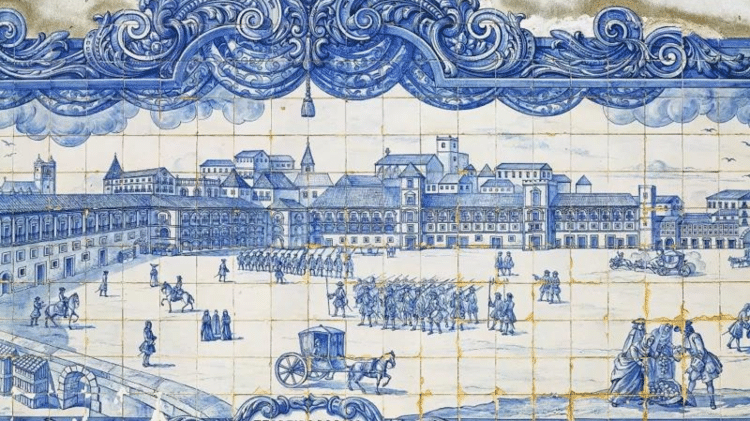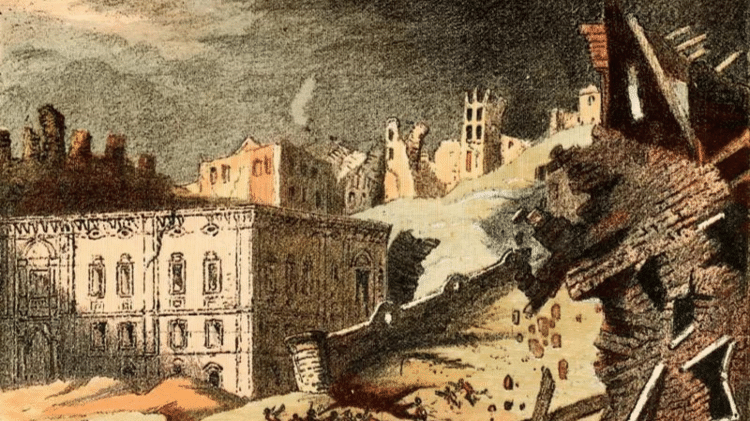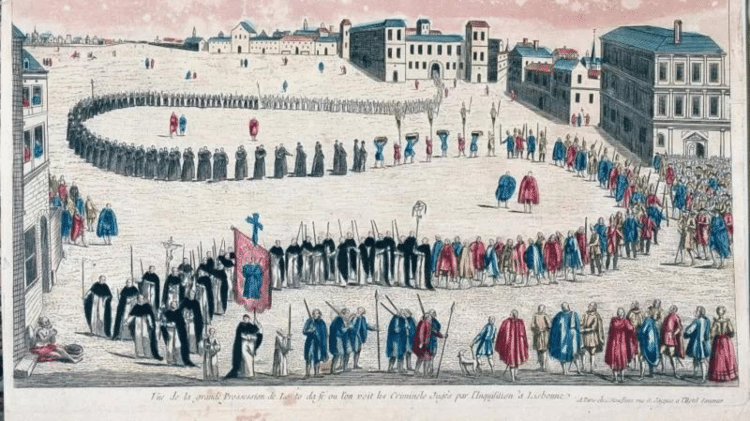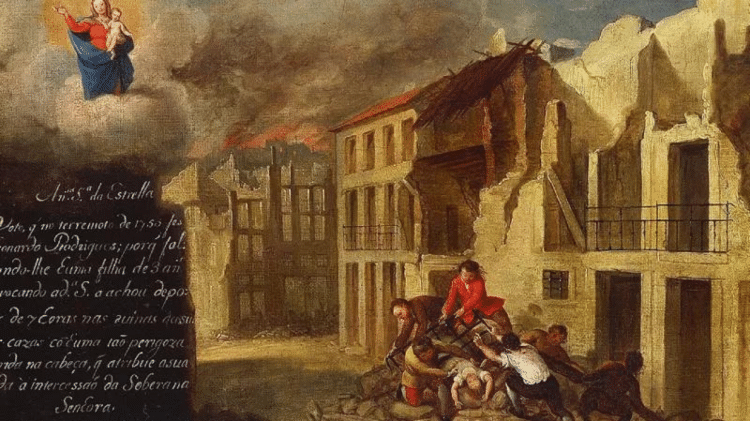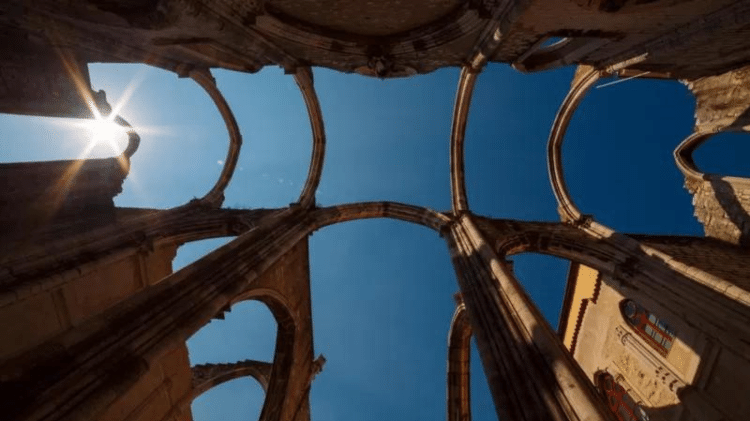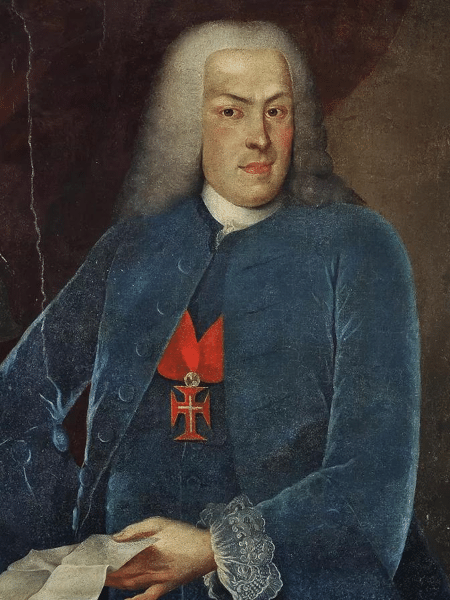“There has never been a better morning than the morning of November 1,” wrote the Reverend Charles Davy, one of the many foreigners living in Lisbon, in 1755.
“A metropolis was the capital of a world colonial empire stretching from Africa (with Angola, Mozambique and Cape Verde), Asia (with Goa and Macau) and of course Latin America (with Brazil)”, said Vic Echegoyen, author of the historical novel revive.
“Portugal was a very, very wealthy kingdom thanks to the wealth of these colonies,” the author added in a conversation with BBC Reel.
“Lisbon was a very attractive sight for first-time visitors,” said Edward Paice, the book’s author. The Wrath of God – The Incredible Story of the Earthquake That Destroyed Lisbon in 1755 (Record/2010), to BBC Witness.
“There were magnificent monasteries and great palaces. Their architecture was heavily influenced by the Orient as much as Islamic architecture.”
“The sun was shining in all its glory,” Father Davy continued.
“The whole face of heaven was completely calm and clear, and there was not the slightest warning sign of the impending event that had turned this once thriving, rich and bustling city into the ultimate scene of fear and desolation.”
It was one of the deadliest natural disasters the world has ever seen.
Tens of thousands of people died. Lisbon was destroyed, but from the ashes something incredible emerged: a new way of thinking and a new science.
fear
It was All Saints’ Day, and by 9:30 a.m. most of the city’s devout residents were in churches.
Suddenly, what many eyewitnesses, including Father Davy, believed was the noise of many cars began to be heard.
“I soon realized that I was wrong, because I discovered that it was caused by a strange and frightening noise underground, like distant thunder.”
The earthquake was a mega-quake felt in most of Western Europe and off the northwest coast of Africa.
“It’s still one of the biggest earthquakes ever recorded. There were three earthquakes in total, and the second was by far the largest. It was later rated between 8.5 and 9 on the Richter scale,” Paice said. Said.
Survivors of the first earthquake, including Mr. Lieutenant, sought safety in a large open square on the banks of the Tagus River. Braddick is an English merchant.
“There I found an extraordinary community of people of both sexes and of all classes and circumstances, from whom I observed several priests fleeing from the altar at their ordinances, some of the leading canons of the patriarchal church, in purple and reddish robes, in their robes, half-naked ladies and others without shoes in the middle of the liturgy . . . they all fell to their knees with the horror of death on their faces, ‘Peace be upon me!’ they shout.”
“In the middle of the dedication came the second great jolt and completed the demolition of buildings that were already heavily demolished.”
More fears were to come: the earthquake unleashed a tsunami in the Atlantic, which then traveled upriver.
“He came raging, roaring, and rushed towards the bank with such energy that we immediately ran as fast as we could for our lives,” Father Davy wrote.
“You might think this dark event ends here, but nothing, the horrors of November 1st, fills a volume.”
“As soon as it got dark, the whole city seemed to glow, with a light so bright that it could be read. It could be said without exaggeration that fires broke out in at least a hundred places at the same time and continued. It was like that for six uninterrupted days.”
All candles in churches and cathedrals were lit for religious celebration, which, when they fell, increased their flame.
“There are no words to express the horror,” another witness wrote. “For those who don’t feel like this, it’s not easy to imagine or describe those who do.”
“God forbid, you’ll never get the right idea about it, because it can only be gained through experience.”
a new way of thinking
In a city as important as Lisbon, news of the disaster spread quickly.
“It was the first global media disaster that caught the attention of all papers, newspapers and travelers in Europe,” Echegoyen said.
And it sounded more than an alarm.
The aftershocks of the earthquake shook the thought of time.
The church and its followers sought blame for the tragedy.
“After the earthquake that destroyed three-quarters of Lisbon, the most effective tool devised by the country’s sages to avoid complete destruction was a magnificent celebration of auto-da-fé. [ritual de penitência pública]”The decision of the University of Coimbra that the sight of some people burning with all seriousness in a slow fire is an infallible secret to avoiding earthquakes,” Voltaire wrote in his polemical philosophical story. sincere (1759).
As the Inquisition continued its work, the great minds of the time, many of whom were beginning to see the world in a new way, and which we now associate with the Enlightenment, intensified their thoughts.
By publishing three separate texts on disaster, Immanuel Kant became one of the first thinkers to try to explain earthquakes due to natural rather than supernatural causes.
Voltaire and Jean-Jacques Rousseau had a famous exchange of ideas.
The disaster challenged the Enlightenment optimism expressed by the German sage Gottfried Leibniz and the English poet Alexander Pope.
They proposed solving the historical problem of what evil is by arguing that God’s goodness assures all of Creation, and so any aspect of evil is precisely that: an appearance, the product of humans’ inability to understand its function in the whole. .
“The prevailing philosophy was that we lived in the best of all possible worlds, that even in these catastrophes there was providence. God had a plan, and it was not for us to question,” Paice said.
Historian André Canhoto Costa told BBC Reel, “Voltaire was already critical of the theological interpretation of nature, and many of his works mocked the idea that God somehow manages all human affairs.”
A few weeks after the earthquake, Voltaire, in his “Poem on the Lisbon Catastrophe,” launched the first attack on what would become one of the greatest philosophical debates in history.
According to Paice, the philosopher questioned a God who could see something “as terrible as what happened” in an event.
“When you see the crowd of victims, can you say, ‘God has avenged, the price of their crimes is their death’?
What crime, what crime did these children who were oppressed in the womb of their mother, left in blood?
Does the now-defunct Lisbon have more flaws than London, Paris steeped in pleasure?
Lisbon is shattered and people are dancing in Paris”
lines Poem about the Lisbon Disaster Voltaire’s
justify the pain
The earthquake that destroyed Lisbon shook Voltaire further from the ground: he undermined his efforts to justify suffering by reference to a greater good, and opened up the possibility that undeserved suffering can be attributed to God.
Rousseau rejected this idea and responded with a long letter in which he argued, among other things, that the suffering of the people of Lisbon was not God but their own actions: the way they built the city and the social motivations of the inhabitants.
He argued that a morally neutral terrestrial formation is experienced as a disaster because of the self-generated sensibility produced by the way of living in that place.
“Nature did not build 20,000 houses there with six to seven floors, (…) if the inhabitants of this great city lived more dispersedly, with more equality and humility, the damage from the earthquake would have been less, perhaps not at all – present”, he wrote. Rousseau.
He also argues that even after the danger posed by the initial tremor, people refused to take the necessary precautions.
“How many unfortunate people died because one wanted to save their clothes, the other their paper, the other their money?” she asked.
As the debate progressed, science emerged as a better way to explain the world and its workings.
“The Protestant Reformation had already happened, but somehow it kept the line between man and nature intact. The earthquake contributed to a more violent rupture,” Costa stressed.
“The Lisbon earthquake triggered a series of events, such as when you throw a stone into a lake, the waves expand and get stronger and affect everything around you,” Echegoyen said. Said.
“The age of free thought to question the omnipotent power of the church and kings was already taking shape, but I believe that day humanity began to awaken and the modern age was truly born.”
a new science
“The event is now considered an important milestone in the scientific and philosophical fields,” Paice said. Said.
“It was the most researched earthquake in history. We have a lot of first-hand information about the event, and scientists have begun to analyze what happened without mentioning God.”
“November 1, 1755 can be said to be the birth date of the seismology currently studied based on this event,” Maria João Marques of the Lisbon Earthquake Center told BBC Reel.
And many attribute the birth of this new School of Science to the Marquess of Pombal.
He was the king’s right-hand man and was responsible for the rebuilding of the city of Lisbon.
Echegoyen sent out questionnaires to each congregation, asking questions like: How long did the earth shake? How hard was it? What damage did it do? How many died? Did you notice any strange signs before the earthquake?
“With his team, they collected and analyzed the responses, compiling a one-of-a-kind booklet of all the matches from all over the place until a model began to emerge that became the foundation of seismological science as we know it today.”
The rebuilding of Lisbon was guided by science.
Trying to minimize deaths in future disasters, supporting people’s evacuation and firefighting efforts, Marquês de Pombal ensured that narrow and winding streets were replaced by wide avenues, and spaces were wide and ventilated.
In addition, innovative engineering methods were used with flexible wooden structures on the walls of the buildings so that they would not “wobble or fall”.
To test this and other earthquake measures, troops marched around buildings to simulate tremors, giving rise to seismic engineering.
– This text is published insidehttps://www.bbc.com/portuguese/internacional-62453669
source: Noticias
[author_name]
